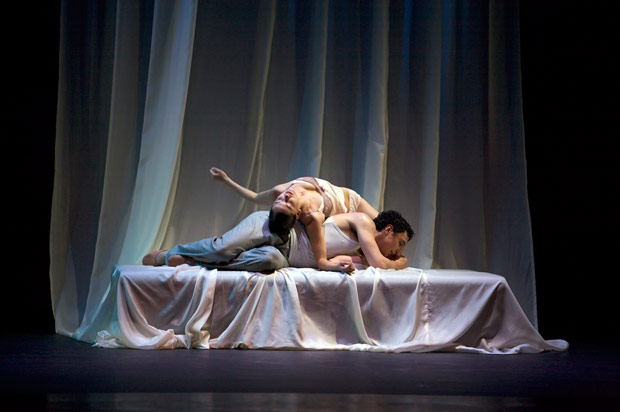
© Andy Ross. (Click image for larger version)
Scottish Ballet
Romeo and Juliet
Glasgow, Kings Theatre
19 April 2014
www.scottishballet.co.uk
Perhaps it’s the case that our receptors for beauty lie close in the brain to those for horror: what else could explain how a story about two young lovers dying a needless, violent death should be so passionately, tragically beautiful. This paradox seems even more vivid when the medium of expression is purely visual – which is perhaps why Romeo & Juliet is the most enduring and popular of Shakespeare’s plays-turned-ballets.
Scottish Ballet: Romeo & Juliet 2014 Trailer from Scottish Ballet on Vimeo.
In Scottish Ballet’s production – a revival of Krzysztof Pastor’s 2008 choreography, set to Prokofiev’s score – medieval Verona is brought into the 20th century. Black and white cinema footage lures us into the glamour and iconography of 1930s Italian life, while on stage Tatyana van Walsum’s chic costumes denote the Montague and Capulet divisions through colour codes. It’s interesting to see that in almost every modern production of Romeo & Juliet the Capulets are cast as the slick villains of the piece; in this case po-faced black-dressed Fascisti to the Montagues’ pastel-brown laid-back bunch. When the gathering breaks into a fracas we see the colour divisions clearly in a grid of neat tussles that resembles a chess board, reminding us of the strategic struggle for power at the heart of this timeless community.
It’s here, in the initial confrontation between Mercutio and the Capulets, that one of the ballet’s stand-out stars first emerges. Victor Zarallo’s Mercutio is charismatic, wild and captivating, transferring the verve of Shakespeare’s language into movement, whether he is mocking, fighting or posturing. Both title dancers, Sophie Martin and Erik Cavallari show crisp precision and lyrical phrasing, although there is something perhaps too clean and earnest in their connection, and I found myself at times wanting to see Zarallo dancing with Martin to see what sparks would fly.
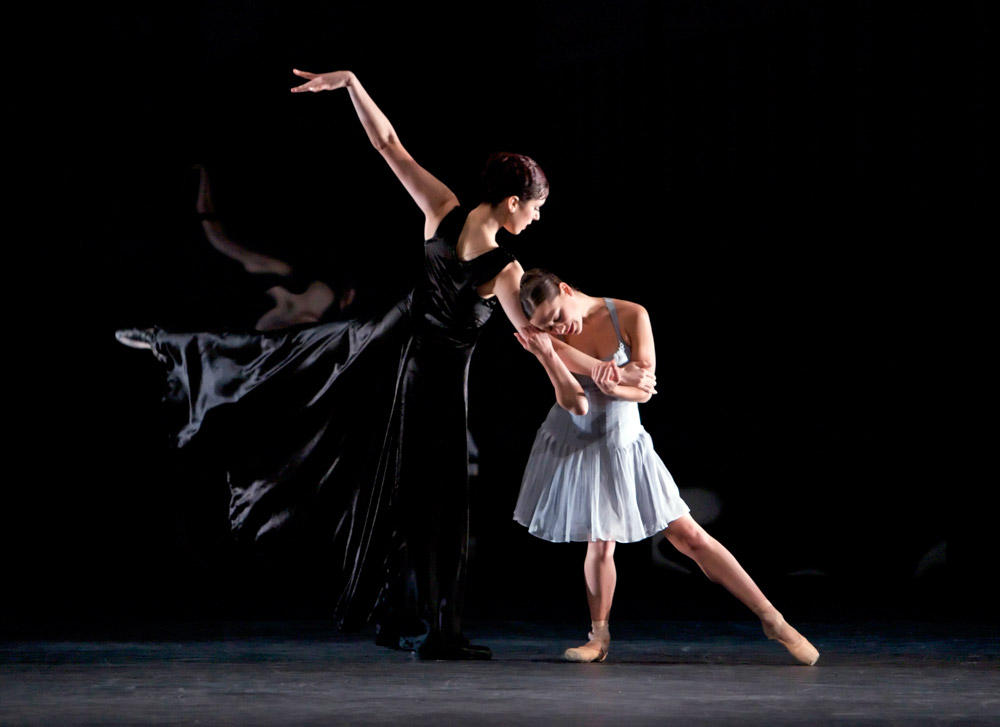
© Andy Ross. (Click image for larger version)
But it’s Martin’s duets with Eve Mutso, as Lady Capulet, that strike home a note of tenderness and tragedy that transcends Shakespeare’s play. In their first pas de deux, Mutso places a hand on Martin’s belly, and in that tiny moment we glimpse the connection between generations of women carrying on their bloodline – something that will be tragically curtailed by the play’s end. The development of a girl’s innocence into a woman’s wisdom and glamour is exquisitely expressed from mother to daughter, and Martin and Mutso are as perfect and gripping a pairing as any romantic duo.
Above all, what is noticeable is that this is a ballet driven throughout by dance – and if that seems an odd thing to say about a ballet, it’s testament to the number of contemporary ballets that rely on character-work and mime to tell the story, rather than trusting (as Pastor does) the poeticism of abstract grace to convey just as much.

© Andy Ross. (Click image for larger version)
There are chinks in this ballet’s vision – moving from 1930s to 50s to 90s to remind us of the story’s timelessness seems a little heavy-handed; and the powder blue costumes of Romeo & Juliet make them curiously sexless in their juvenility. But with a gripping story, soaring filmic score, and above all the driving energy of Pastor’s choreography that never lets up, this is as enjoyable a piece of storytelling dance as you could hope for.











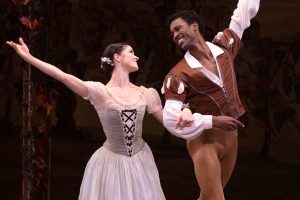
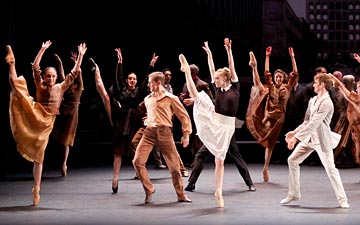

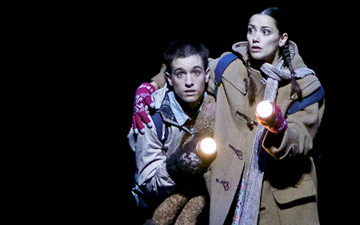

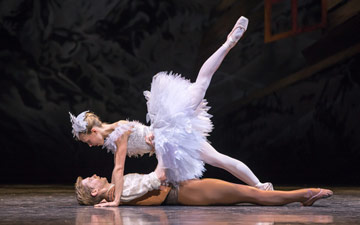
You must be logged in to post a comment.